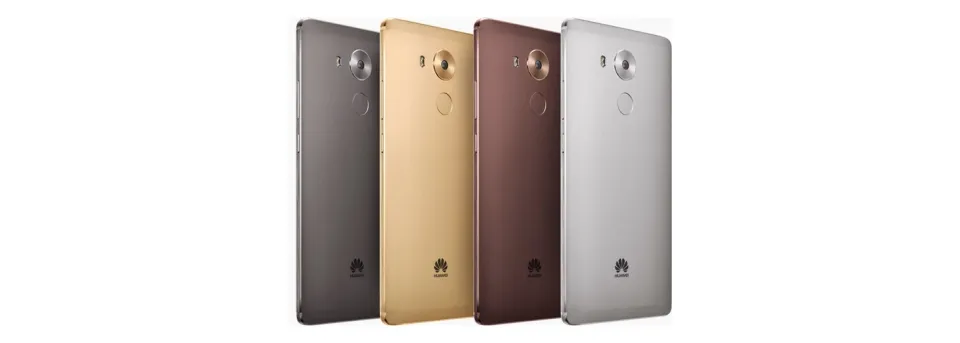Huawei Mate 8 pushes phone size, battery limits

With its giant 6-inch display the Huawei Mate 8 sits somewhere between a large phone and a small tablet.
It is hewn from a block of metal. The jargon way of saying the same thing is that it has an alloy unibody. This gives the phone a solid feel.
Huawei’s Mate 8 has a great camera and boasts the longest battery life of any big phone.
At NZ$1100 for the 64GB model, it costs less than premium phones from rival brands. It’s a good price for a powerful phone.
The hardware is excellent. The software is less so. While the Mate 8 runs Android 6.0, The operating system is hidden behind a heavy skin that borrows most of its ideas from Apple’s iOS.
First-rate hardware
Although the Huawei Mate 8 is roughly the same size as an Apple iPhone 6S Plus, its six-inch screen is a full half inch bigger than the Apple display.
The phone measures 157 by 81 by 8 mm. This compares with 158 by 78 by 7 mm, for the iPhone 6S Plus.
Huawei gets a bigger screen by using smaller bezels — that’s the area framing the display — and putting the touch button on the phones’ back. This arrangement works well in practice, although it takes some getting used to.
Mate 8 is a fraction lighter at 185 g compared to the Apple iPhone 6S Plus at 192 g.
In practice both phones feel similar in the pocket. On balance the iPhone feels a touch more comfortable in the hand thanks to more rounded edges, it’s also a little easier to control with one hand. Most people will need both hands to drive the Mate 8.
Huawei missed a trick with the display. Despite having an extra half inch across the diagonal, which translates to around 20 percent more screen real estate, it has the same number of pixels as Apple’s iPhone 6S Plus. Or, to put it another way, a lower pixel density.
This is not noticeable. It’s easy to read text on both phones. Photos and videos look as good on both. You can’t see individual pixels that size and while my eyes can’t see an obvious difference, photos manage to look crisper on the iPhone display. There’s nothing in it as far as text display is concerned.
I don’t have a Nexus 6P — also made by Huawei — for comparison, but going by the iPhone experience, I suspect that phone would also display crisper photos than the Mate 8.
All day battery and then some
Huawei’s biggest achievement is to cram a 4,000 mAh battery into the case. For me this is the phone’s best feature. It runs and runs. I found the phone can go almost two days on a single charge.
There was still plenty in the tank when I spent a 12 hour day with a fully charged phone. About six hours into the second day there were warning signs I was about to run out so I had to ration use. If I worked eight hour days like everyone else, two days' use seems plausible.
The other great battery feature is the Mate 8 charges fast. It took a little over an hour to fill the tank.
Powerful enough
Talk of phone processors is often meaningless twaddle. Unless you have special needs or use obscure apps, the only thing that matters is whether the phone is fast enough to cope. The same goes for Ram. For the record the Mate 8 has 4GB, which is generous.
Let’s just say the Mate 8 is fast enough for normal use. If you want full technical specs go and look elsewhere.
Just as all premium phones have more-than-adequate processors, they also all have good cameras. The Mate 8 is no exception to this rule. Its 16 megapixel camera has optical image stabilisation and a two-tone flash. It can shoot in HDR mode. In use the camera fires up immediately, I never noticed a delay.
Software
Huawei’s camera software is a close copy of the iOS software. There are lots of features and options to play with. You may like that. I found it best to leave these to a minimum and stick with straightforward shots. The results are good, even in low light conditions.
There’s a lot of Apple-inspired ideas in the Huawei software. It looks good, but in practice is a disappointment. There’s a non-standard split-screen mode, which doesn’t seem to work with the applications where it might be useful.
Something called ‘knuckle sense’ is supposed to take screenshots. Not only couldn’t I get it to work, but I worried I was about to smash the screen every time I tried.
Who should buy the Huawei Mate 8
If Huawei had stuck with the plain vanilla Android used in its Nexus 6P, the Mate 8 would be a world-beater. Instead it is another in a conga line of respectable, me-too premium Android phones.
I recommend you look at the Nexus 6P when considering the Mate 8, if you don’t need the big display or long battery life you’ll get a better experience. The two phones sell for the same price, so you have a real choice.
Nerdy readers might buy the Huawei Mate 8 then install a less irritating version of Android.
If battery life is important to you, the Mate 8 would be your best option. Likewise if your eyes need big text it is a great choice. The downside is that the phone is big. It will fit into a man’s jacket pocket or in loose fit trousers, women may find it too big for some clothes.
Member discussion